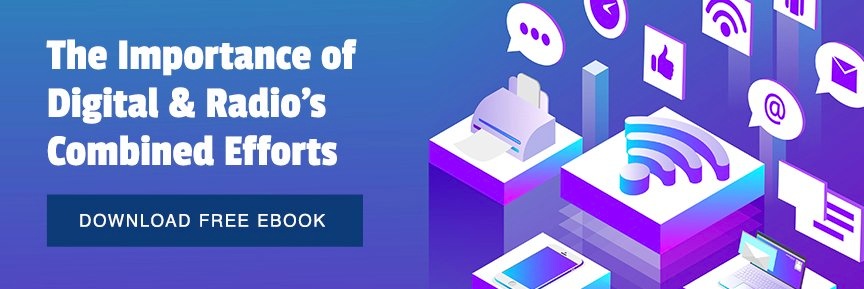Email marketing has one of the highest returns on investment of any marketing tool you can use. Think about it. You're not paying expensive ad rates. You avoid the high expenses associated with broadcast television and many other ad formats. Perhaps best of all is that you can achieve tangible, revenue-driving results without spending a lot of time. Email marketing also has the added benefit of using a contact database that you own, instead of in social media where users can come and go without your control. No matter what you may have read online, you don't need much to get started. But when you do begin to learn the ropes, you can improve your ROI, build brand awareness, drive sales, and grow your business with some strategically designed emails.
Segment Your Email List to Personalize Your Emails
Getting started begins with your customer and consumer lists. Email marketing works best when the emails you send are explicitly targeted to the recipients. Personalized emails have higher open and click-through rates than generic emails. Further, generic emails that are overly promotional are often flagged by email spam filters. You want to make sure that your intended recipients receive your email, open it, and take action. Your recipients want to do business with a company they trust and one they perceive values them, so personalized, conversational emails are crucial.
That doesn't mean you need to draft an email to every single customer or prospect you have. But it does mean that you should develop different messaging sets based on what appeals to different segments of consumers. You can and should segment your lists based on demographic data like age, race, gender, and income level, among others, then develop messaging that speaks to each group. Your emails to a group of middle-income young adults should be different from those you send to affluent seniors.
You also should send emails based on specific actions consumers or customers take. For example, when a consumer signs up for a newsletter or a customer makes a purchase, they should receive a "Thank You" email. While this level of email communication may have been time intensive in the past, today, you can use a low-cost customer relationship management system (CRM) that can automate these emails. You can write draft customer messages, load them into your CRM, and establish the conditions under which they will be sent to customers.
Improve Your Email's Deliverability
Though millions of businesses and organizations use email for marketing their goods and services, most of these emails end up in spam folders. But you can take some relatively simple steps to avoid the dreaded spam folder, such as avoiding using common trigger words and phrases like "Order," "Clearance," or "Buy now" in your subject line and body text.
Using personalized, conversational language not only helps engender trust between you and a prospect or customer but also enables you to avoid being identified as spam by email filters. Focus on the value your products or services provide rather than heavy-handed sales language for the best results.
You also must include an "Unsubscribe" button at the bottom of each email you sent that allows the consumer to stop receiving emails from you. Without such an option, your emails will automatically be categorized as spam.
And despite the benefits of automation, don't overdo it by sending out too many emails to customers. One email a week is a good baseline for most businesses. Depending on the consumer's interest and other factors, you may want to send out more. But sending emails out daily or multiple emails per day is the fastest way to get consumers to click "Unsubscribe." That's not the kind of increase you want to see.
Optimize Your Emails for Mobile
Today's shoppers buy by phone. Further, consumers increasingly check their email by phone rather than on their desktop or laptop. If your emails aren't optimized for mobile viewing, then you'll not only miss out on sales, but consumers, inundated with options, may discount your brand entirely.
You'll want to develop an email template that is optimized for viewing on mobile and desktop devices. Don't just download a template that says it is mobile optimized. Review it yourself on various devices before using it to ensure that your brand is well represented no matter how it's viewed. To achieve the best results, you want to make sure that if someone reads your email on a laptop and then reads a subsequent email on their smartphone, there's no difference in their experience.
Figure Out When Your Audience Reads Email
CRMs usually feature analytics data that allows you to identify when your customers are reading your email. By reviewing this data, you can establish email delivery times that improve the odds of your emails being opened and read. Most people receive dozens, if not hundreds, of emails a day from friends, colleagues, and businesses, so you want to make sure that yours isn't buried in the bottom of their inbox.
While this data is helpful, consider it in context to other demographic trends and factors. For example, if you sell your products online to a global customer base, keep time zones in mind when scheduling emails. Further, if you're selling directly to businesses and emailing work accounts, you should likely determine optimal morning times during the week, when leads are at their desks, fresh, and not yet deluged with tasks. By contrast, as consumers are working during the day, they may not read their personal email. Therefore, evenings and weekends are typically better times for B2C email marketing efforts.
Grab Your Audience's Attention
Finally, you need to stand out from the crowd. While subject lines have the appearance and character limitations, you need a creative subject line that will compel recipients to open your email as soon as they see it. Determining the best subject line for a given audience requires experimentation, but most CRMs can allow you to test the effectiveness of different subject lines with your audience.
Subject lines should not be the only focus of your experimentation. Once the recipient opens our email, the email copy, images, and any video must be compelling enough for them to take action. With important emails in your email marketing campaign, such as product launch or sale announcements, you'll want to test the efficacy of different creative content with small sample sizes before sending it to your entire list. Identifying the combination of text, images, and video in your emails that triggers the greatest level of consumer response is key to increasing your marketing ROI.
Despite the popularity and flashiness of other marketing tools, email marketing can provide a significant return on your time and investment, especially when you leverage a CRM to automate your emails. By properly segmenting your list, sending out personal emails, optimizing them for mobile and deliverability, and developing the right creative to compel consumers to take action, you can effectively use email marketing to achieve a high marketing ROI as well as your other marketing and business goals.



